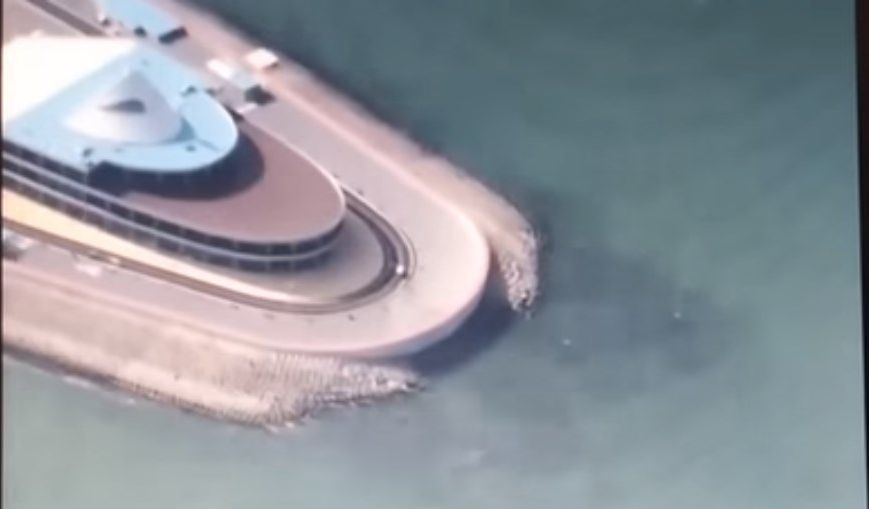A veteran engineer has suggested that the breakwater components at one of the Hong Kong-Zhuhai-Macao Bridge’s artificial islands offer no protection at high tide, as they are underwater. However, a top government official has said there was a concrete wall to protect the island from waves, and that its design has a scientific basis.
Concerns were raised after photos showed that the eastern artificial island just west of Hong Kong’s border featured breakwater components that were disconnected from the main structure. The western artificial island closer to the Macau side – connected by an underwater tunnel – also showed a similar scattered arrangement of reinforced concrete blocks. The Zhuhai-based managing authority and the Hong Kong government have both claimed the the design was intentional and not problematic.
But new photos showed that the blocks at the western island were underwater at high tide, with sea waves directly hitting the island’s perimeter.

So Yiu-kwan, an experienced civil and structural engineer, said the water level when the photo was taken was at 1.74 mPD, but the highest level at the location could be 2.7 mPD, meaning it could be a meter higher than the level in the photo. “mPD” is a surveying term which uses sea level as a reference point.
“What is the most important function of the breakwater? They should be above the waves to offer protection,” So said. “How does the breakwater offer protection from waves if it is below water?”
So also said that the concrete dolos blocks were placed in incorrect directions at the eastern artificial island, in that the blocks were all lined up in the same direction.

He said they will rotate like a hinge when waves hit, and will offer no protection. He said the issue can be fixed by changing the direction of the blocks.
Roy Tam, an environmentalist and a district councillor from the Neo Democrats party, said that artificial islands built in Japan, Denmark, or the US included wave reduction blocks which were arranged in an orderly pattern, unlike the random placement seen at the bridge.

Former lawmaker Edward Yiu, also a surveyor, said the agreement signed in February 2010 between the three governments stated that no legal proceedings can be launched if there was an issue, and it could only be dealt with through “friendly negotiation.”
He said the Hong Kong government paid about 40 per cent of the construction fee for the bridge’s main projects, but it has no power to urge the managing Authority to respond to questions.

Lawmaker Gary Fan also said it was unfair that Hong Kong only had one representative from its Highways Department within the authority, whilst all other representatives were from the mainland.
‘Scientific design’
Responding to questions on breakwater blocks below water level, Director of Highways Daniel Chung said it was already considered in the design, as there was a concrete wall at the location to break waves.
“The design of the artificial island has gone through tests though modelling… it is a scientific design,” he told reporters on Thursday.
Chung also denied reports that the breakwater blocks were already all in place by 2013, before the final design plan was approved in 2014.

He said the last section of the underwater tunnel – between the two artificial islands – was only completed in 2016, thus the blocks could only be placed on top of the section by then.
He also said some blocks on the edge of the islands connecting to the over-water sea bridge were allowed to be placed in 2013, since some of the plans were already approved earlier.
